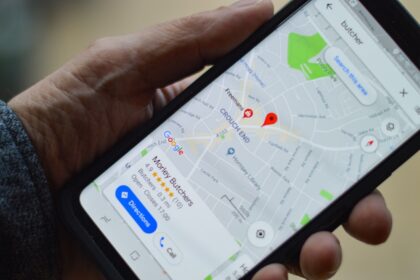27 important SEO statistics for 2024 (and what they mean for you)
Did you know that an incredible 96.55% of all online content gets no traffic from Google? Or that almost 26% of all searches result in zero clicks?
The simple truth today is that, if you have a business website, you need SEO. If you’re not easily founds on Google by the right people, and those people don’t click through, then you are losing highly valuable traffic… probably to a competitor.
If you want to improve your SEO this year, you need to know a bit about how it works. And to help you, we’ve researched 27 important SEO statistics for 2024. We’ve grouped them into eight categories:
And to make this article as useful as possible for you, we’ve included practical recommendations for things you can do to improve your SEO for each category.
So let’s get started!
1) SERP position
The goal of many companies with SEO is to get to page one of Google’s SERPs (search engine results pages). But is that enough? According to the data – no. You don’t just need to be on page one, you need to be at the TOP.
A 2023 study by Backlinko found that number one organic result on a Google SERP has an average click through rate (CTR) of 27.6%. This means that more than one quarter of people who search for that term end up clicking on the first result – leaving all the other websites fighting over the rest.
The difference between being at the top and bottom of page one of Google is stark: the top organic result is 10x more likely to get a click compared to the result at number 10 on the page.
If you’re in second or third position on a SERP, meanwhile, you can expect to get a CTR of 15.8% and 11% respectively. This means that, collectively, the top three results get over 50% of all clicks.

At the bottom of the page, the click through rate for websites in positions 8-10 is pretty much the same, which means that simply moving up a couple of spaces from the bottom might not bring you any more organic traffic.
The news gets even worse if you’re stuck on page two, as only .63% of Google searchers apparently click on anything on the second page.
And exactly how many clicks can you expect to get from Google if you do manage to get ranked? The reality is that most of the queries you rank for will deliver only a few impressions. In fact, Backlinko discovered that 90.3% of all the queries they looked at had fewer than 10 impressions. (An impression is when someone has seen, or may have seen a link to your site in search results.)
This is probably because most of the keywords your site ranks for will be long tails with low search volume. Or that you aren’t ranking highly for search terms, and are therefore not on page one… or even page 10.
So what can you do to improve your click through rate? The short answer is work on your SEO! The better your SEO, the more likely Google is to push you up its SERPs so you can pick up the higher click volumes.
One piece of good news is that you still have time if your page isn’t already at number one. The average age of pages at the top of search results is 2.6 years. And 78% of the results in the top 10 are over a year old. So with patience and good SEO work, you can move your pages up the rankings.
Here are some quick tips to help improve your SERP position and CTR:
- Consider search intent: The more you understand about why someone might be searching for a page, the better you can optimise it so it ranks for the right terms – and gets clicked on.
- Create pages for search terms: Identify the search term you want to rank for, and create a page specifically for that term using best practice SEO.
- Aim for long tail keywords: It’s easier to rank for less competitive long tail keywords, and your page is more likely to be relevant for them, so your CTR should increase.
- Check your site speed: How long your website takes to load (on all devices) is a big factor in SEO. Use tools like Page Speed Insights to check yours. 0-4 seconds is the optimum load time.
- Keep your content evergreen: Avoid content decay by regularly refreshing and updating the pages you want to rank.
SERP position statistics
Here are the SERP position stats at a glance:
- The number one result on Google has an average CTR of 27.6%
- The top organic result gets 10x more clicks than the result at number 10
- The CTR for results in positions 8-10 on page one is almost the same
- Only .63% of Google searchers click on anything on the second page
- 90.3% of search queries have fewer than 10 impressions
2) Page titles
What you call your web pages is an important part of SEO. Let’s look at what the statistics tell us about best practice for page titles.
Should your page title contain a question? According to Backlinko, not necessarily. Their study found that titles that do and don’t contain a question have similar CTRs. On social media though, it’s a different story. This research from 2013 found that question headlines with “self-referencing cues” performed better on social media. This means questions that directly asked YOU. For example:
- “What do these three things mean to you?” Is a self-referencing question
- “What do these three things mean?” Is not a self-referencing question
Length, however, does make a difference. The title tags with the highest CTR have between 40 to 60 characters. Roughly translated, this works out to between six and nine words. This research agrees with findings by Etsy that shorter title tags outperformed longer ones on their site.

The downside to shorter page titles is that there is less opportunity to add in keywords (which we’ll get to next). So there’s a decision you need to make when writing page titles: longer titles with more keywords, or shorter titles with potentially a higher CTR?
Page title statistics
Here are the page title statistics at a glance:
- Titles that do and don’t contain a question have similar CTRs
- Content with self-referencing questions performs well on social media
- Title tags with 40 to 60 characters have the highest CTR
3) Keywords
The dream scenario for SEO is that you rank at the top of page one for a high volume keyword (and that keyword is relevant to what you do). But how realistic is this?
In the US there are 19,881 keywords with more than 100,000 monthly searches. But this is an anomaly. In fact, only 0.0008% of keywords get more than 100,000 monthly searches. The vast majority of keywords – 94.74% – get 10 monthly searches or less.
How long should your keywords be? Traditionally, businesses would try to compete for prime head keywords of one or two words. But Backlinko’s research shows that these don’t perform as well. They noticed that longer keywords (between 10-15 words in length) get 1.76x more clicks than single-word terms.
This is probably because longer keywords usually answer a very specific search intent, so if someone is searching for that term, and your page ranks for it, they are more likely to click.
As an example, imagine you are a pest control business in London and you want to rank for flea treatments in your area.
“Flea treatments” is far too broad a term (and competitive). “Flea treatments London” is a little more specific, but will still have a wide range of people searching, including people who don’t want to hire a pest control business or aren’t looking for a solution right now.
“Pest control companies in London who treat houses for fleas” however is very specific, and likely to be used by someone who has an immediate intent to hire a company – and therefore more likely to click on your link.
Adding your keyword to your URL also helps; URLs that contain terms similar to keywords have a 45% higher click-through rate than URLs without. So a URL like pestcontrollondon.com/treatments will get a lower number of clicks than pestcontrollondon/flea-treatments if you want to rank for a keyword that includes “flea treatments”.
As an example, the page below has this URL: masonspestcontrol.co.uk/pests/fleas. This tells Google that it is a page about pests, and fleas in particular. If the business owner wanted to improve their rankings for searches for ‘flea treatments’, they could change their URL to: masonspestcontrol.co.uk/pests/flea-treatments.
This is confirmed by Google themselves in their Search Engine Optimisation Guide: “URLs with words that are relevant to your site’s content and structure are friendlier for visitors navigating your site.”
So what does this mean for you? While it can be tempting to rank for popular head terms, a more realistic and better SEO strategy is to pick up lots of smaller volume, long tail keyword traffic. You’ll stand a much stronger chance of ranking for long tail keywords, plus they are more likely to be relevant to what your page is about, so you’ll get more of the right people clicking through.
Also, consider your keywords when planning your page title and URL.
Keywords statistics
Here are the keyword statistics at a glance:
- 0.0008% of keywords get more than 100,000 monthly searches
- 94.74% of keywords get 10 monthly searches or less
- Longer keywords get 1.76 times more clicks than single-word terms
- URLs with terms similar to keywords have a 45% higher CTR
4) Backlinks
We know that backlinks are important for SEO (they are one of the eight most important ranking factors for Google). But what’s the reality regarding them?
According to Ahrefs, 66.31% of pages have no backlinks. Given that the more backlinks you have, the more organic traffic you are likely to get, it makes sense to work on building your backlinks.
Some companies pay to build their backlinks. But this can be expensive, especially if you want a link from a high quality website. Ahrefs calculate the average cost of buying a link in 2023 to be $361.44. And the average cost of publishing a paid guest post at $77.80.
So what can you do if you don’t have the money to invest in buying backlinks? There are many different backlink strategies, but two of the most accessible ones for organically growing your backlinks are creating original content that is so valuable people will WANT to link to it, and publishing guest posts on other websites.
When creating content, the longer the better. The data shows that content over 3,000 words receives 77.2% more links than content with 1,000 or fewer words.
Just remember that for backlinks to really benefit you, they need to be from websites with as high a domain authority as possible, and from web pages/anchor text that are relevant to the page they link to. So, for example, if you own a pest control business in London, a backlink from an article on the BBC about flea infestations is more valuable than a backlink from a small cafe website in New York.
Backlinks statistics
Here are the backlinks statistics at a glance:
- 66.31% of pages have no backlinks
- The average cost of buying a backlink is $361.44
- The average cost of publishing a paid guest post is $77.80
- Content over 3,000 words receives 77.2% more links
5) Meta data
Your page titles and descriptions are important for SEO – and your brand. They’re the first (and maybe only) thing someone will see of your website in the search engine results pages. They also influence whether someone will decide to click on your page or not.
Here’s an example of how a page title and page description looks on a Google SERP:

Given their importance, it’s essential that you spend time crafting your page titles and descriptions. However, there’s no guarantee that your carefully written meta data will actually appear on Google’s SERPs. Why? Because, according to a study by Zyppy SEO, Google rewrites 61% of titles and 62.78% of page descriptions.
How can you avoid your carefully crafted meta copy being rehashed by Google? Of the 2,370 websites analysed for the study, it was found that Google rewrote more than 96.6% of extremely short page titles (1-5 characters) and 99.9% of very long titles (more than 70 characters).
The ideal page title length is between 50-60 characters. Page titles within this word count were changed less – between 39% and 42% of the time.
Other factors that increased the likelihood of Google rewriting your page titles are:
- Page titles with brackets are changed 77.6% of the time
- The words between brackets are removed 32.9% of the time
- The pipe is replaced or removed 41% of the time
- Dashes are removed 19.7% of the time
- Adding too many keywords
- Mentioning too many brand names
When it comes to crafting your page description, the recommendation is to stick to between 50 and 160 characters, keep it conversational, use your keywords and make it ‘sell’ your page. Remember, the goal of your page description is to make someone want to click on your link.
To sum up, to write quality meta data (and reduce the likelihood of Google editing it), stick to the ideal length and use the right keywords. It can also help to match your page’s H1 tag to your title, as this reduces the chance of it being edited to 20.6%.
Meta data statistics
Here are the meta data statistics at a glance:
- Google rewrites 61% of page titles and 62.78% of page descriptions
- The least altered page titles were between 50-60 characters
- Matching your H1 tag to your title reduces the chance of being edited to 20.6%
6) Featured snippets
Getting a featured snippet on Google is like winning the SEO lottery. Featured snippets are those short excerpts of text you see at the top of Google’s search results. They are designed to quickly answer your question at a glance.
Here’s an example of a featured snippet:

81.95% of the time, a snippet will be in paragraph form (as above), and 10.77% of the time it’s in list form.
If you want to rank for a featured snippet, you’ll need to rank on page one of Google for the search term, as 99.58% of all featured snippets come from websites on there. It also helps to content that answers questions, add a table of contents with anchor links, and include an FAQ section.
Here are some tips to help you get a featured snippet:
- Remember: Google is looking for content that reads like an answer, how-to guide or a step-by-step process
- Ask the question you want to answer in your H1 (main headline) and page title
- Answer the answer in your body copy
- If you want to feature for a step-by-step process, use sub-heads to specify each step
- Put the content you want in the snippet as close to your H1 as possible
- The ideal snippet length is 50 to 60 words, not characters
The downside to featuring in a snippet is that they actually get very few clicks, as they are intended to give people the answers they are looking for in one glance. However they are brilliant for brand exposure, so still worth trying for.
Featured snippets statistics
Here are the featured snippets statistics at a glance:
- 81.95% of snippets are in paragraph form
- 10.77% of snippets are in list form
- 99.58% of featured snippets come from websites on page one of Google
7) Video
Wondering if it’s worth investing time and money in video? Google says yes! Research from BrightEdge revealed that 26% of search results have a video thumbnail. Pages with videos also have a 41% higher CTR than text-only pages.
Video is especially powerful on mobiles; mobile users are three times more likely to see organic video results. So make sure your videos are optimised for mobile, and that they are high quality – low resolution videos will just frustrate the people who do click through.
Video statistics
Here are the video statistics at a glance:
- 26% of search results have a video thumbnail
- Pages with videos also have a 41% higher CTR
8) Google
When we talk about SEO, we are referring to all search engines. But the reality is that almost 90% of all searches in the world take place on Google. In a far distant second place is Bing (9.19%), followed by Yahoo (2.72%), Baidu, YANDEX and DuckDuckGo.
The average person uses Google to find something between three and four times a day. Collectively, this means that Google is processing an incredible 99,000 search queries every second, or 8.5 billion searches a day. 27.03% of all Google traffic comes from the US. This is followed by:
- India at 4.46%
- Brazil at 4.41%
- UK at 3.85%
- Japan at 3.61%
Interestingly, 15% of all daily searches on Google are brand new, which means they are terms no one has searched for before. This also means there are always new opportunities to rank for terms that you haven’t already been discovered for!
In order to remain at the top, Google is continually refining and updating its algorithm (the criteria it uses to decide where to rank web pages on its SERPs). Between September 2018 and September 2023 it completed 36 algorithms – 13 of which were core updates.
This is why it is important to stay on top of your SEO if you want not just to get to the top of Google, but remain there. Here are two articles you may find helpful:
- Eight SEO strategies we used to get 4 million organic hits from Google
- What is content decay? Five ways you can fix it so you don’t lose search traffic
Google statistics
Here are the Google statistics at a glance:
- 90% of all searches in the world take place on Google
- The average person searches on Google between three and four times a day
- 15% of all daily searches on Google are brand new
Google’s top eight ranking factors
So what can you do to increase your chances of reaching the top of a search engine results page? Google currently uses over 200 ranking factors to decide what web pages to show for which search results.
Luckily you don’t need to know all 200+ to help your SEO! Here are the eight top factors that are important to know and work on:
1) Quality content
This continually comes up as THE most important SEO factor. So make sure your content is valuable, informative, and relevant.
2) Backlinks
Google assesses the value of your webpages by how many high quality backlinks you have from other websites to them. So grow your backlinks from the right websites.
3) Technical SEO
Your website needs to work technically so that Google can easily crawl it, and your users have a good experience. So check your site speed and usability on mobiles.
4) Keywords
Google uses keywords as clues to what your content is about. So make sure you choose the right keywords and use them in the right places.
5) User experience (UX)
Google wants to make sure your website is easy for everyone to access. So ensure it’s easy to use and navigate, and everything works as it should.
6) Schema markup
This is the code code that helps search engines understand the information on your page. Plugins like Yoast SEO on WordPress make this really easy for you.
7) Social signals
Likes, shares and mentions etc help to grow your reputation and shares – all of which helps with SEO. So make your content easily shareable and encourage interaction.
8) Brand signals
How people feel and talk about your brand online is used as a sign of trust by Google. So work to ensure your brand is well-known and respected.
Need more help with SEO?
You’ll find plenty of helpful SEO content on our site if you’d like to learn more. Just click here to see all SEO articles.
We also take you through building a successful SEO strategy step by step in our online course Easy SEO. Easy SEO is designed for complete beginners to SEO, as well as small businesses and freelancers who don’t feel confident using it and aren’t yet seeing the results they want.
Author: Hannah Martin is the founder of Talented Ladies Club, and an award-winning former advertising copywriter. She’s also an SEO expert and tutor on the Easy SEO course.











